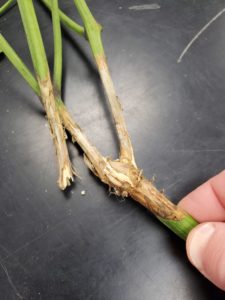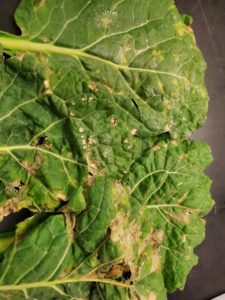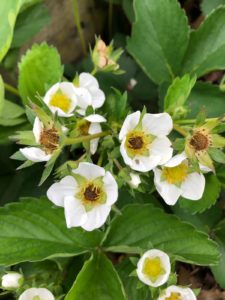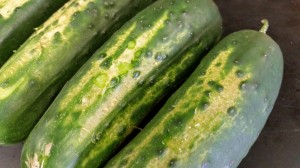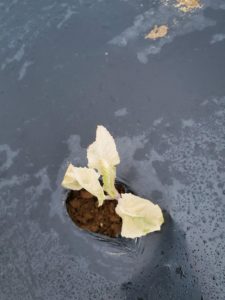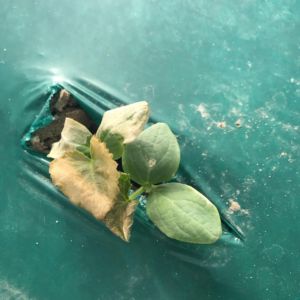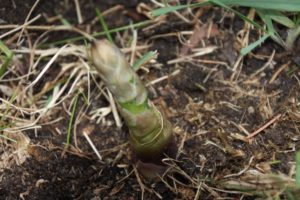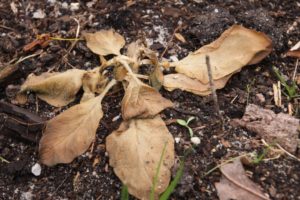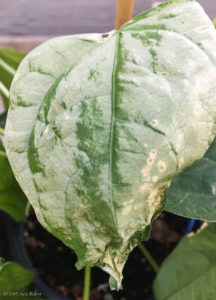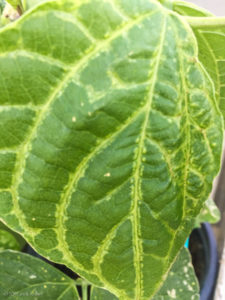The phenylamide fungicides (FRAC group 4) are a highly active class of fungicides that target oomycete pathogens such Phytophthora and Pythium spp. FRAC group 4 fungicides are also highly effective against downy mildew pathogens such as Pseudoperonospora cubensis (cucurbit downy mildew), Phytophthora infestans (Late blight), and basil downy mildew (Peronospora belbahrii) and many other important pathogens in vegetable production. Like other fungicide classes, FRAC group 4 fungicides have a high-risk for fungicide resistance development. The phenylamides (PA) inhibit ribosomal RNA (rRNA) biosynthesis in oomycete pathogens which inhibits several life stages in oomycetes including hyphal growth, haustoria and sporangia formation. The exact mechanism for resistance is not completely understood although research has shown that PA resistance is control by a single incompletely dominant gene although multiple mutations or mechanisms may be involved in PA resistance development. Pathogens such as cucurbit downy mildew, late blight, and basil downy mildew can be disseminated over vast geographic distances in any given year, thus this migration can be responsible for the introduction of new pathogen genotypes (including PA resistant) to new locations along with local selection pressure due to PA fungicide use resulting in changes in the pathogen population. Additionally, pathogens such as P. infestans and P. capsici (Phytophthora blight) are highly sexually active at the local level, because of the potential presence of two mating types (A1 and A2), you have a “recipe” that is always evolving. Resistance development to PA fungicides is often described as sensitive, intermediate, or resistant based on EC50 (Effective Concentration) values of the different fungicides needed to kill 50% of the pathogen in laboratory assays. This type of collected information is useful in determining what proportion of a given local, or wide geographic pathogen population, may be PA resistant. Recommended resistance management guidelines developed FRAC have not changed since 1997and are intended as general recommendations that must be adapted to respective pathosystems, fungicide use and patterns, and resistance levels.
The following are general recommendations for PA fungicide use as stated by FRAC.
- PA fungicide should be used on a preventative basis; and not used as a curative or on a eradicative basis
- As foliar applications, PA fungicide should always be tank mix with a unrelated fungicide from a different FRAC group
- The total number of PA applications per season should be limited to 2 to 4 depending on label requirements
- PA sprays are recommended for use earlier in the production season during active vegetative growth
- PA should not be used as soil treatments against foliar disease development
Resistance development in P. capsici to mefenoxam has been known for many years in southern New Jersey. This is most likely to the widescale and overuse of mefenoxam in its early days because of the lack of an alternative chemistry, as well as a result of crop rotations where susceptible crops were planted in the same field for many years. In the past decade, there have been several new fungicides from different FRAC groups labeled for oomycete control. These include: Orondis Gold (oxathiapiprolin + mefenoxam, FRAC groups 49 + 4), Previcur Flex (propamocarb, 28), Ranman (cyazofamid, 21), Presidio (fluopicolide, 43), and Phosphites (33) for field use. Ranman, Previcur Flex, and phosphites have greenhouse use labels for Pythium control. Ranman and Previcur Flex can be applied in the transplant water. Orondis Gold, mefenoxam, metalaxyl, and the phosphites are the most systemic of the group and should readily be taken up the by plant via application through the drip. Presidio has locally systemic and translaminar activity and offers protection of the root system via drip. Ranman has protectant-like activity and thus will offer root system protection. Growers with a known history of mefenoxam-insensitivity on their farm should use Presidio, Previcur Flex, or Ranman plus a Phosphite fungicide in rotation in their drip application programs. Importantly, if mefenoxam has not been used in particular fields on any crop for a number of years (more than 5+) the fungus may revert back to being mefenoxam-sensitive and control with these products may return.
For more information please see specific fungicide labels, crops sections, and greenhouse uses in Table E-11 in the 2020/2021 Mid-Atlantic Commercial Vegetable Production Recommendations Guide.
Reference:
Hermann, D.C., McKenzie, D., Cohen, Y., and Gisi, U. 2019. Phenylamides: Market trends for resistance evolution for important oomycete pathogens more than 35 years after product introduction (FRAC code 4). Chapter 6 in: Fungicide Resistance in North America, 2nd Ed. Katherine L. Stevenson, Margaret T. McGrath, and Christian A. Wyenandt (eds). The American Phytopathological Society, St. Paul, MN.
Additional resources:
Damping-off: Identifying and Controlling Early-Season Damping-off Pathogens
Understanding Damping-off Pathogens During Seeding and Transplanting
